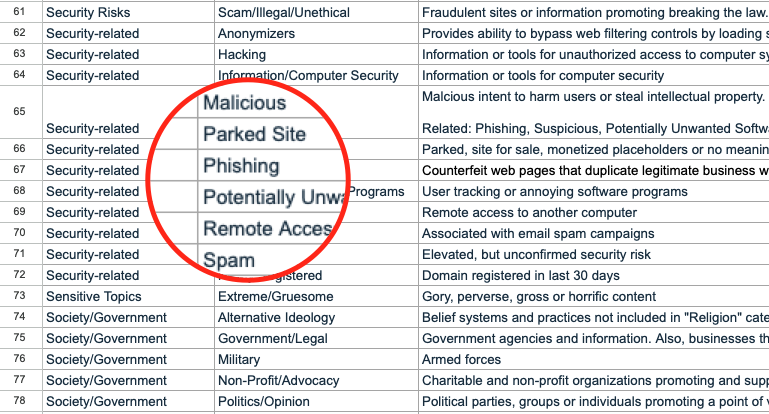As the world came online and the internet took on a life of its own, websites of all kinds popped up by the thousands. This explosion of content on every topic imaginable is part of what has made the worldwide web such a captivating and valuable space over the past half century.
Over time, the web has grown to encompass so many sites, domains, URLS, hosts and IP addresses that it has become impossible to zoom out far enough to get the full picture of what’s actually out there on the web. The web is just too big, and besides, you wouldn’t actually want to (nor could you) know something about every website out there. There simply wouldn’t be any point to knowing or storing all of that information.
That said, regardless of whatever websites exist online, it is certainly helpful at times to know what specific websites are about. When you consider the context of cybersecurity, safe browsing or acceptable use policies inside of organizations, knowing what types of content are present on a URL is important. This is where URL classification comes in.
With the internet having grown so fast in its early days, it quickly became apparent that not all websites were places you’d want to spend a whole lot of time. URL classification came about as a way to understand what a site is about without having to visit it, providing useful information about the content of a website as needed. With that demand so high and use cases so prevalent, web classification actually emerged back in the 1990s as a way to categorize sites and potentially preempt their unwitting visitation by people and machines connecting on the internet.
URL classification is the process of ascribing a URL to one or more categories based on the subject matter of the content on that host. As simple examples, ESPN.com would fall under the “Sports” or “Entertainment” website categories, whereas Chase.com would be in the “Financial” category.
Use Cases for URL Classification
There are several use cases where URL classification is an essential capability for organizations. Let’s explore three.
Security Analysis
Security analysts are often tasked with investigating the activities surrounding certain network events. When these events create an alert, the analyst must identify the hosts which were involved with the events. By using a URL classification service such as alphaMountain’s, analysts can look up the domains or IP addresses associated with those events and receive back the categories to which those hosts belong. This not only shortens the investigations, but it also gives the analysts better context and fidelity without having to visit any of those hosts which could potentially serve unwanted or malicious content.
Security Policies
URL classification also plays a major role in enabling the deployment of effective security policies for organizations. By ingesting URL classification data into network security technologies such as next-generation firewalls (NGFW) or secure browsers, security architects can create policies that prohibit access to hosts that have been classified into risky categories such as “malicious,” “suspicious,” or “phishing.” In most cases, security policies would be enforced at the category level, simply prohibiting devices on the corporate network from accessing those hosts. These types of security policies can efficiently and effectively reduce the risk to an organization from malicious or malignant threats.
Web Filtering Policies
Cybersecurity is not the only use case for URL classification. Productivity can also come into play when organizations need to help ensure that their workforce is focused on their corporate objectives. Similar to setting security policies, organizations can use URL classification to block access to hosts or URLs (most likely websites in this case) that don’t serve the corporate interests. Likely enforced at the network level as well, these prohibited sites might include those categorized as “social media,” “sports,” “entertainment,” or “adult.” Organizations can feel more confident in their productivity by using URL classification to keep their workforce focused on their responsibilities as opposed to their personal interests while at work.
List of URL Categories
As the web has continued to grow and evolve, naturally, so have the types of websites and content that make up today’s internet. In keeping with this growth, alphaMountain’s list of URL categories has grown from 83 to 89 categories. The emergence of new technologies has required the development of new categories that enable accurate URL classification for security analysts and architects. You can read about some of the technologies driving this development in our recent announcement, and if you need URL classification for your organization, request a free trial of the alphaMountain categories API.

